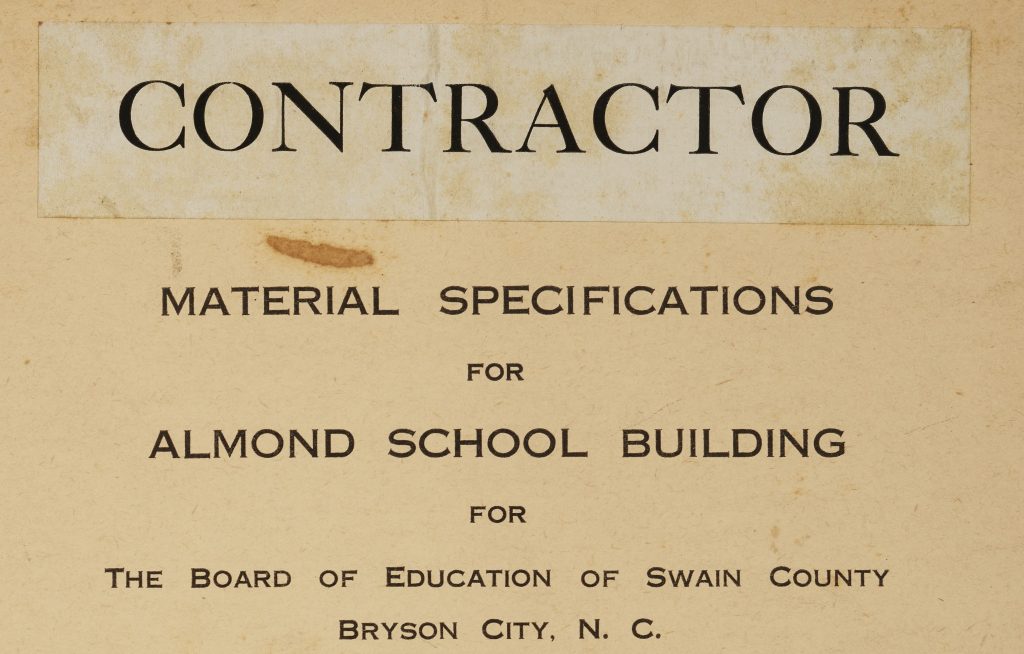Thanks to our partner, Southwestern Community College (SWCC), a batch containing Student Government Association (SGA) meeting minutes from the mid-1980s to early 2000s along with 20 contractor bid specification packets for materials to build the Almond School in Swain County from October 1943.

In the mid-1920s, several small schools located in and around the mountain community of Almond were consolidated into what was referred to as the Almond School. The original school was not used for long, however. A proposal by the Tennessee Valley Authority (TVA) to build a dam on the Little Tennessee River at Fontana to provide power and flood control literally sunk the school under the waters of a new lake in 1945. Fontana Dam, known for being the tallest concrete dam east of the Mississippi River, impounds the Little Tennessee River to form the 10,000 acre reservoir of Fontana Lake. According to community members we spoke to during our recent visit to Sylva, North Carolina, parts of the original Almond School can still be seen annually when the lake is drawn down beginning around September when the risk of floods are higher.

The contractor bid specification packets in our newest batch are for the Almond School’s replacement which was moved to Lauada. While this packets may not have the blueprint plans for the school, they provide an extremely detailed list, not only of the specific materials they were going to use, but the location of the proposed building, its priority rating, the nearest railway, payment schedule for contractors, bid deposits, how to format a bid and, interestingly, insight into how building construction was impacted by World War II through War Production Board regulations. According to an article in the August 30, 1943 issue of The Bryson City Times, the plans for the school called for 10 classrooms, principal’s office, teachers’ rest room, library, first aid room, book room, cafeteria, and auditorium. Today, the building continues to be used extensively by the community—though not as a primary school—serving as the primary hub for SWCC’s Nantahala School for the Arts Heritage Arts program, NC State University’s Swain County Cooperative Extension,

To learn more about Southwestern Community College, visit their website here.
To view more materials from across North Carolina, visit our North Carolina Memory Collection linked here.
Information in this blog post was obtained through conversations with community members, WCU’s “Travel Western North Carolina” project, the TVA website, and the National Park Service’s Fontana Dam page.
